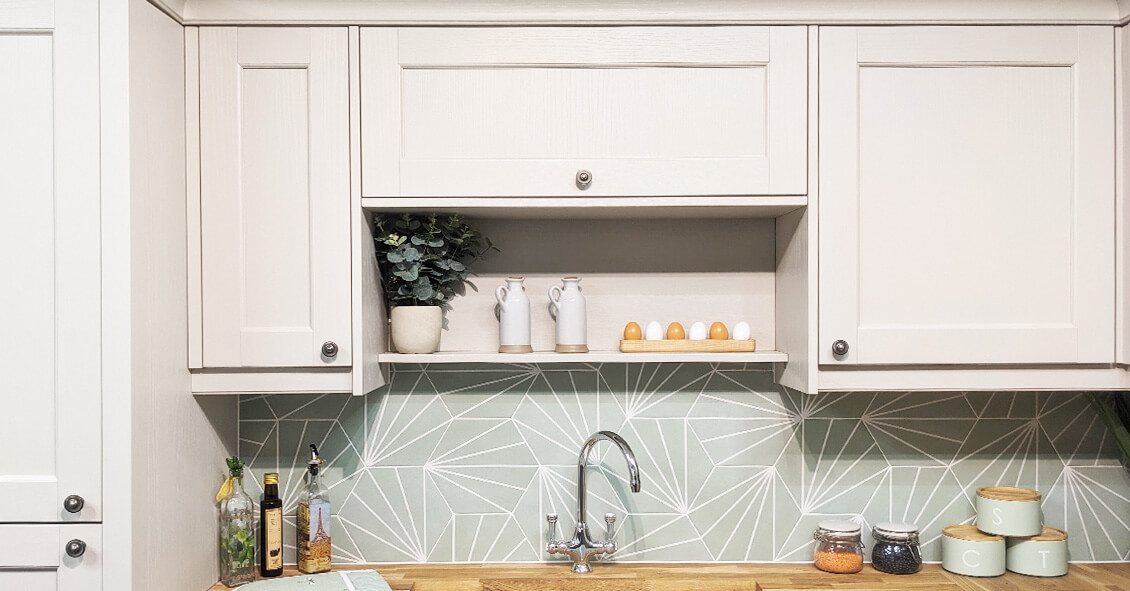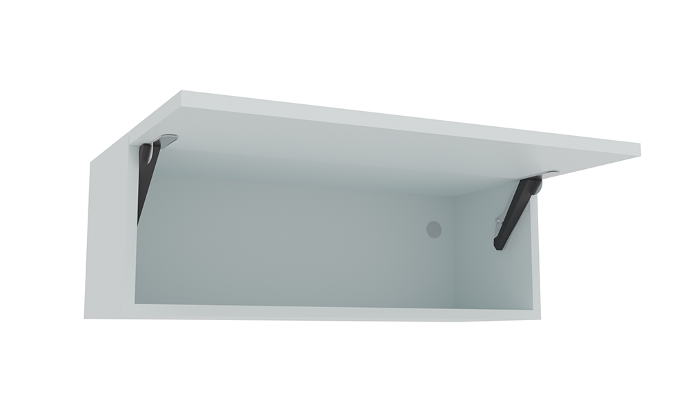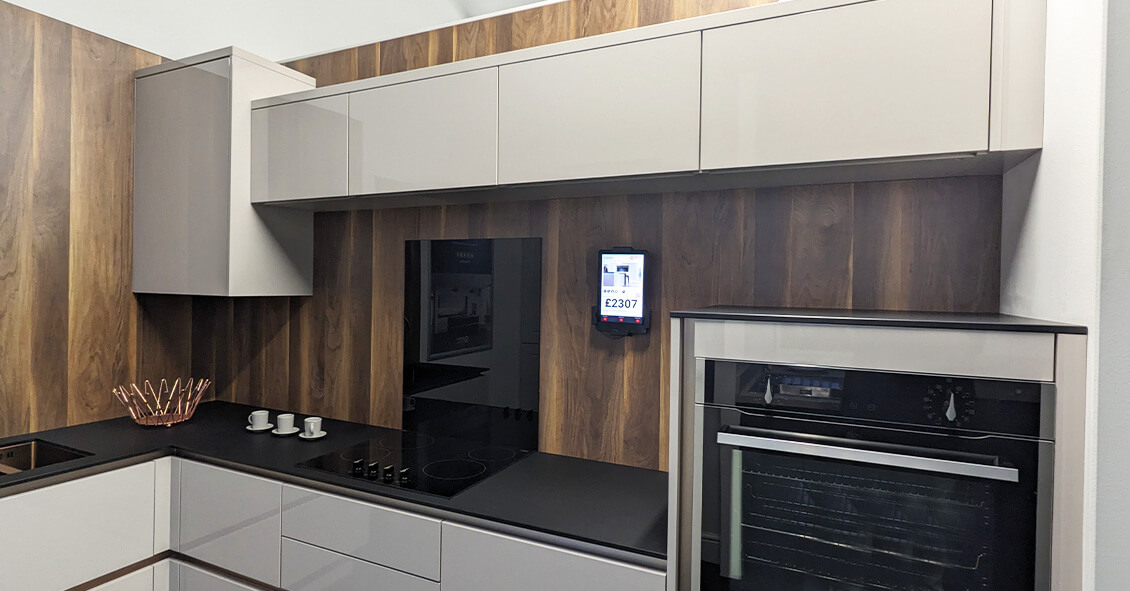How to Plan Bridging Units & Top Boxes in Your Kitchen

Over Sink Bridging Unit with Shelf from Better Kitchens
When redesigning or updating your kitchen, maximising storage while maintaining a sleek and unified look is a top priority.
One often overlooked solution is the use of bridging units, also known as top boxes.
These units are not only practical but also add an aesthetic appeal to your kitchen. This guide will explore everything you need to know about bridging units, making it simple for anyone to understand and apply.
What Are Bridging Units?
Bridging units are essentially wall-mounted cabinets that are placed above standard wall units, hobs, or sinks.

800mm Top Hung Bridging Unit from Better Kitchens
Their primary purpose is to utilise the space that would otherwise be wasted, providing extra storage and helping to create a cohesive look across your kitchen.
They are designed to be wider than they are tall, making them an ideal solution for adding storage without overwhelming the space visually.
Key Features:
- Shallow Depth: Typically, the depth of a bridging unit is 300mm, plus the door thickness, which aligns perfectly with standard wall units.
- Variety of Sizes: These units come in several widths, including 500mm, 600mm, 800mm, 900mm, and 1000mm, catering to different kitchen sizes and layouts.
- Two Height Options: The standard height option is 360mm, and the smaller version is 290mm, offering flexibility in design.
- Soft-Closing Hinges: Doors are equipped with soft-closing hinges for a smooth and quiet operation.
What Are Top Boxes?
While bridging units offer a sleek, space-efficient solution for above-counter storage, top boxes present another layer of functionality and design for your kitchen.
600mm Side Hung Bridging Unit from Better Kitchens
Similar in purpose but distinct in dimensions, top boxes elevate the storage capabilities of your kitchen cabinetry.
Top boxes are taller wall-mounted cabinets designed to sit above standard wall units or fill spaces where extra storage is needed. Their primary advantage lies in their height, making them an excellent choice for storing items less frequently used, yet they maintain the aesthetic appeal of your kitchen design.
Key Features:
Increased Height: Top boxes offer two primary height options, ranging from 450-460mm for the first option, and approximately 490-500mm the second. This added height makes them ideal for storing less frequently used items while maximising vertical space in the kitchen.
Standard Depth: The depth of top boxes is consistent with standard wall units at 300mm, plus the thickness of the door, ensuring a seamless fit with the rest of your kitchen cabinetry.
Limited Width Availability: Unlike bridging units which come in several widths, top boxes are available in a single width of 600mm only.
Soft-Closing Hinges: Like bridging units, top boxes are fitted with soft-closing hinges. This feature ensures doors close gently and quietly, reducing noise and enhancing the durability of the cabinetry.
Comparing Bridging Units and Top Boxes: Key Differences
While bridging units and top boxes both serve as valuable additions to kitchen cabinetry by offering extra storage space and enhancing aesthetic appeal, there are notable differences in their design and installation that cater to varied preferences and requirements.
Understanding these distinctions can help you make an informed decision when planning your kitchen layout.
Bridging Units vs Top Boxes: A Comparative Overview
| Feature | Bridging Units | Top Boxes |
|---|---|---|
| Mounting Orientation | Top-hung | Side-hung (with a choice of left or right opening) |
| Height Options | 290mm or 360mm | 450-460mm or 490-500mm (range dependent) |
| Depth | 300mm (plus door thickness) | 300mm (plus door thickness) |
| Shelves | Do not come with shelves | Do not come with shelves |
| Design Purpose | Designed to bridge gaps between cabinets or over appliances, focusing on accessibility and aesthetic integration | Taller, maximising vertical space for storing seldom-used items, adaptable to kitchen layouts with their side-hung design |
How to Use Bridging Units Effectively

Ruin of Bridging Units over Hob and Midi Oven Unit in Better Kitchens Showroom
Bridging units can be strategically placed to enhance the kitchen's functionality and appearance. Here are some tips on how to use them effectively:
- Over Hobs and Sinks: They create additional storage space while keeping essentials within reach.
- Display Areas: Positioning a runner of bridging units with a shelf below offers a perfect spot for decorative items or frequently used kitchenware.
- Extractor Integration: For a modern and streamlined look, bridging units can house inline extractors, with the unit modified to accommodate the extractor fan.
Installation Tips
Installing bridging units follows the same process as standard wall units. They come with wall hanging brackets, featuring level adjusters for easy installation. It's important to note that bridging units do not come with shelves due to their shallow height.
"Bridging units are not just about adding storage; they're about making every inch of your kitchen work smarter, bringing together form and function with a sleek, cohesive design." - Better Kitchens Designer
Design Considerations
When incorporating bridging units into your kitchen design, consider the following to ensure a seamless and functional setup:
- Measurements: Always check the dimensions of your kitchen and the units to ensure a perfect fit.
- Design Cohesion: Choose a style and colour that complements your existing kitchen cabinetry for a unified look.
- Accessibility: Install the units at a height that is easily accessible, keeping in mind the primary users of the kitchen.
Planning Your Kitchen with Bridging Units and Top Boxes

Velluto Painted Sherbet True Handleless Bridging Units over Sink in Better Kitchens Showroom
Bridging units and top boxes both offer versatile solutions to kitchen storage and design challenges, each bringing unique benefits to the space.
Whether you're seeking to maximise storage, enhance accessibility, or achieve a sleek look, incorporating these units into your kitchen design can transform the functionality and aesthetics of your space.
Integrating Bridging Units and Top Boxes
To effectively integrate both bridging units and top boxes into your kitchen design, consider the following steps:
- Assess Your Storage Needs: Evaluate what items you need to store and how often you use them. This will help determine the balance between bridging units and top boxes in your design.
- Visualise the Space: Use online kitchen planning tools to experiment with different layouts and see how bridging units and top boxes can fit into your kitchen. These tools can provide a visual representation of how each unit type can enhance the overall look and functionality of your space.
- Consult with Design Experts: Kitchen design professionals can offer valuable insights into how to best utilise bridging units and top boxes within your layout. They can suggest configurations that optimise storage, maintain accessibility, and ensure a cohesive design aesthetic.
- Consider the Workflow: Placement is key. Ensure that the location of bridging units and top boxes complements the kitchen's workflow, making frequently used items accessible and storing seldom-used items out of the way but within reach when needed.
- Harmonise with Your Kitchen's Style: Choose styles and finishes that complement your existing kitchen cabinetry. Bridging units and top boxes should enhance the space without clashing with the overall design theme.
Conclusion
Planning your kitchen with the inclusion of bridging units and top boxes requires a thoughtful approach to both storage needs and aesthetic preferences.
By leveraging online tools and expert advice, you can create a space that is not only beautiful but also maximises every inch of available storage.
Remember, the goal is to design a kitchen that caters to your lifestyle, making cooking, storage, and entertaining more enjoyable and efficient.
Book a kitchen design and planning meeting today to discuss your new kitchen project!

